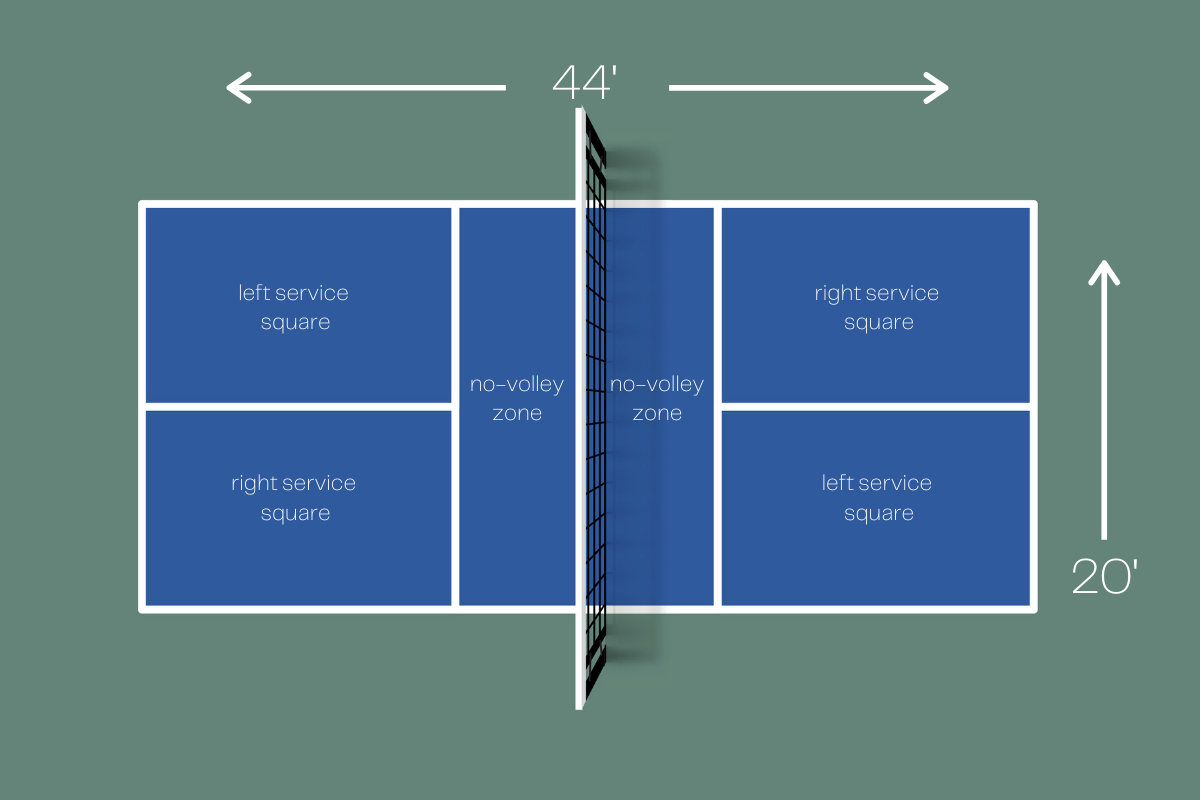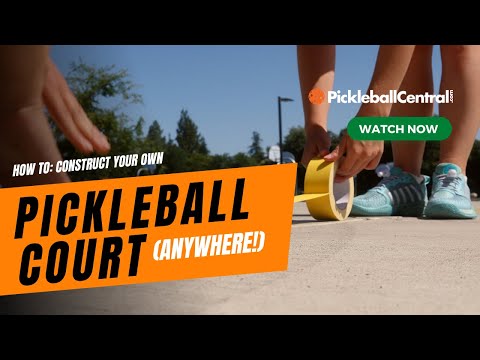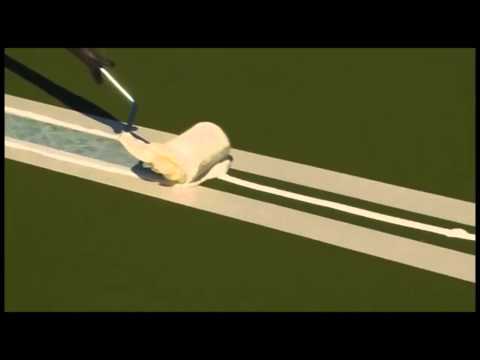The popularity of pickleball has absolutely exploded in recent years. This paddle sport with similarities to tennis, badminton, and ping pong has quickly become a backyard staple. And as more homeowners jump on the bandwagon, backyard pickleball courts are emerging left and right.
Constructing your own pickleball court allows you to enjoy the perks of having a court at home. No driving to public parks or recreation centers. No waiting your turn for an open court. Just walk right out your back door and start playing pickleball anytime with family and friends!
But before taking on a backyard pickleball project, it’s important to understand the key considerations involved. This guide will overview everything you need to know, from space requirements to court specifications to construction and maintenance. Let’s dive in!
Here is a step-by-step backyard pickleball court construction checklist for homeowners:
- ☐ Survey backyard area and measure dimensions to ensure you have adequate space for court
- ☐ Check zoning laws and homeowner association rules before planning
- ☐ Apply for necessary permits – building, electrical, plumbing etc.
- ☐ Prepare the site
- ☐ Remove any trees/bushes from court area
- ☐ Eliminate uneven ground or slopes
- ☐ Install subsurface drainage system if needed
- ☐ Build retaining wall(s) if dealing with elevation changes
- ☐ Put down 4-6 inches crushed stone base
- ☐ Compact with plate compactor
- ☐ Install court surface
- ☐ Dig trenches for court area foundations
- ☐ Concrete: Build wood forms & install rebar grid, pour 4-6 inch slab
- ☐ Asphalt: Compact & prime aggregate base, apply 2-3 inch layer
- ☐ Artificial turf: Roll out turf, secure edges, install infill
- ☐ Insert grounds sleeves for future court accessories
- ☐ Apply line markings as per regulation dimensions
- ☐ Install net system and adjust tensioning
- ☐ Add fencing with locked gate
- ☐ Position lighting poles & wire electrical
- ☐ Construct shade structure
- ☐ Bring in bleacher seating
- ☐ Mount paddle/ball holders & scoreboard
- ☐ Build external storage bench
- ☐ Complete final inspection
The Essentials of Backyard Pickleball Courts
When embarking on plans for a home pickleball court, the first step is determining if you have adequate space to accommodate the court and necessary surrounding clearance.
Space Requirements
The minimum area recommended for a regulation pickleball court is 30’ x 60’, but 34’ x 64’ or larger is ideal. This allows for comfortable movement around all sides of the court during play. You’ll also need to account for space beyond the court area itself. Most backyard courts should have at least 10-12 feet of clearance past the baselines and sidelines.
Before finalizing the location of your court, carefully measure your available backyard space to ensure it can properly fit a standard court plus adequate safety margin. Having cramped surroundings or close obstructions can negatively impact playing experience. If space is extremely limited, you may need to downsize court specifications.
Court Layout and Dimensions
Familiarizing yourself with proper pickleball court markings and dimensions is key for accurate planning. Here is a diagram of a regulation pickleball court layout:

The court surface measures 20’ x 44’ for both singles and doubles play. Lines delineating the playing boundaries should be 2 inches wide, marked clearly in contrasting colors from the court surface. Common line colors are white or yellow.
Some key court components include:
- Service lines: Located 7 feet back from the net on either side
- Center line: Divides the court lengthwise into two equal halves
- Non-volley zone (NVZ): Rectangular area along the net, extending 7 feet back from each side. Also called “the kitchen”.
- Baselines: Located 20 feet back from the net on either side
Precisely measuring and marking these court dimension is critical for accurate play.
Court Surface Options
One of the biggest decisions for a backyard pickleball court is choosing the right playing surface. The main categories are:
Concrete: Extremely durable surface that withstands heavy play with minimal maintenance needed. Installation cost is higher. Requires proper base preparation and drainage.
Asphalt: A budget-friendly option, but requires more routine maintenance than concrete. Has moderate durability with average lifespan of 5-10 years.
Artificial turf: Provides good playability at a lower cost than hard surfaces, with less joint impact. Requires infill material. Surface needs proper cleaning and maintenance. Prone to retaining heat.
When selecting a court surface, consider factors like budget, playing characteristics, longevity, drainage needs, and routine maintenance requirements. Consulting a professional builder can be very beneficial for making the best choice.
Net Requirements
Nets are a basic but vital component of any pickleball court. Regulation pickleball nets measure 22 feet wide, with official height at tennis net height of 36 inches at sidelines and 34 inches in center.
The net itself is typically single mesh fibre, 0.011-0.024 inch diameter, coated with UV protection. Durable materials like vinyl and fiberglass are ideal for outdoor use.
For proper setup, the net must be firmly secured with center strap anchored and sides capped with edgebands. Ensure net is flush with court surface with adequate tension to prevent sagging.
Nets designed specifically for permanent backyard installation run $1,000+. Or choose movable systems or portable nets for more flexibility.
- Pickleball 101: Your Ultimate Guide to Mastering the Game
- Pickleball Court vs Tennis Court: 7 Key Differences You Need To Know
- Pickleball Court Color Combinations [With Pro Tips]
Planning and Construction Considerations
With the court specifications covered, let’s overview some key planning and preparation aspects involved in bringing your backyard pickleball dreams into reality!
Obtaining Necessary Permits
Before starting any kind of backyard construction, you’ll need to investigate zoning codes and regulations in your local municipality. Depending on project scope, you may require approval permits for:
- Land usage
- Building codes
- Court surfacing
- Fences, nets, windscreens
- Lighting installations
Be sure to involve your homeowners association if applicable. Failing to obtain proper permits can result in fines, project delays, or even demolition of unapproved structures.
Site Preparation
Your backyard topography must allow for adequate grading and drainage to maintain a flat, consistent court surface. Address any sloping, uneven sections or low spots through backfilling and grading before surface installation.
For subsurface stability, excavate and fill the court area with compactible base material like crushed stone aggregate. Compact to 95% density before applying finished surface.
Inadequate base stability leads to uneven settling or cracking over time. Likewise, verify the site has proper drainage capacity and install French drains if issues present.
Court Surface Installation
Approaches for installing the final court surface differ by material:
Concrete: Form the court area with lumber or edge restraints. Install steel rebar grid for crack control. Pour at least 4-6 inches of concrete, tapering edges with a broom finish. Use color additives or coatings for desired hue. Allow 30+ days for concrete to fully cure before playing.
Asphalt: Ensure the aggregate base is fully compacted and primed. Use a paving machine for consistent 2-3 inch application and smooth finish. Let asphalt cure for 72 hours minimum before taping lines.
Artificial turf: Clear site debris and level subsurface imperfections. Roll out turf sheets, securing perimeter edges. Anchor the center seam(s) with seam tape. Fill infill material to specified depth. Brush for even distribution.
Surface choices like Sport Court tiles or poured acrylic are other options, installed by overlaying a concrete or asphalt base.
Line Painting and Markings
Use quality paint or athletic marking tape specifically designed for sports surfaces. Tape application is good for adjustable layouts or temporary courts.
Carefully measure distances to plot baselines, service lines, kitchen, and center line. Snap perpendicular lines across the court length and width for accuracy. Apply with a paint sprayer or roller in thin, even coats.
Additional Enhancements
Going beyond the core court elements allows you to optimize playing experience, safety, and enjoyment. Popular additions include:
Lighting
Proper sports lighting transforms a daytime-only court into a 24-hour centerpiece for evening entertainment. Light poles mimic tournament quality illumination reaching 50+ foot candles. Power with manual switches, timers, motion sensors, or smart technology.
Seating and Shade
Spectator seating with shade cover allows friends and family to relax in comfort while watching games. Opt for bleacher-style benches or individual seats. Hardtop or fabric shade structures provide protection from harsh sunlight.
Safety Netting
Backdrops of trees or vegetation can make stray pickleballs difficult to retrieve. Perimeter netting contains errant shots within playing area. Opt for height of 12-15 feet with small holes that don’t obstruct viewing.
Accessories and Equipment
No pickleball court is complete without the necessary gear for play! Stock up on paddles, balls, portable nets, and storage. On-court visual scoreboards eliminate confusion. Have essentials conveniently accessible to start games anytime.
- Pickleball Court vs Badminton Court (Detailed Comparison in Courts)
- How Much Space Do We Really Need for a Pickleball Tournament?
- Pickleball 101: Your Ultimate Guide to Mastering the Game
Conclusion
Crafting your own backyard pickleball haven provides unlimited access to participate in this surging paddle sport. Just be strategic in planning all the intricate elements like space allocation, court specifications, necessary equipment, and possible enhancements. While constructing a regulation pickleball court requires careful preparation and financial investment, the rewards of having on on your property are immense for recreation, activity, and memories.
What are you waiting for? Start sketching plans to make your backyard pickleball dreams a reality! Consult local builders to discuss project scope, budget, timelines, and customization options tailored exactly how you envision. In no time, you’ll have vibrant games of pickleball in progress right outside your backdoor daily.
Frequently Asked Questions
How much space is needed for a backyard pickleball court?
You need at least 30′ x 60′ for a minimum regulation pickleball court size. However, 34′ x 64′ or larger is recommended to allow adequate clearance on all sides for ease of play and safety. Make sure to measure your backyard space carefully before finalizing plans.
What is the average cost to build a backyard pickleball court?
The average cost ranges $15,000 – $40,000, with most homeowners spending around $25,000 – $35,000 for a quality backyard pickleball court construction. Variables like surface type, accessories, site prep work, and enhancements impact overall budget.
Should I choose concrete or asphalt for my pickleball court surface?
Concrete is preferred for its superior durability and longevity, but has a higher upfront cost. Asphalt is more budget-friendly initially, but requires more frequent maintenance and rejuvenation work to keep playing well over years of use.
Can I convert my tennis court into pickleball courts?
Yes, converting a tennis court into dedicated pickleball courts is a great option. A 36′ x 78′ tennis court can easily be divided into four smaller pickleball courts with the proper painting and taping adjustments. This allows four simultaneous pickleball games!
Is it necessary to install a windscreen around a backyard pickleball court?
Windscreens are highly recommended to reduce wind interference during play. Even minor gusts can affect ball control and feel. Mesh netting 8-10 feet high works well to block wind. If installing safety perimeter netting, that can also function as a wind barrier.
- How Old Is Lee Whitwell Pickleball
- Can Pickleball Be Played on Grass? (Pros and Cons)
- Can Pickleball be Played with 2 Players? (You Should Know This)
- How Old Is Dave Weinbach Pickleball: The Badger’s Age, Career, and Accomplishments
- How Old Is Scott Moore Pickleball
- Look Like a Pro: Exactly What to Wear for Pickleball in 2024
- Steamboat Springs’ New Pickleball Center Set for Soft Opening

















